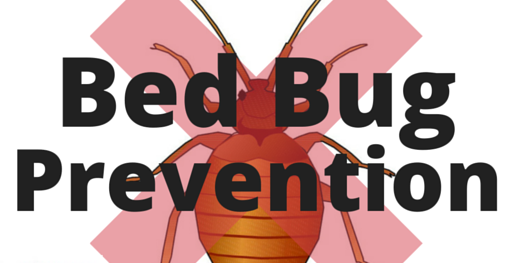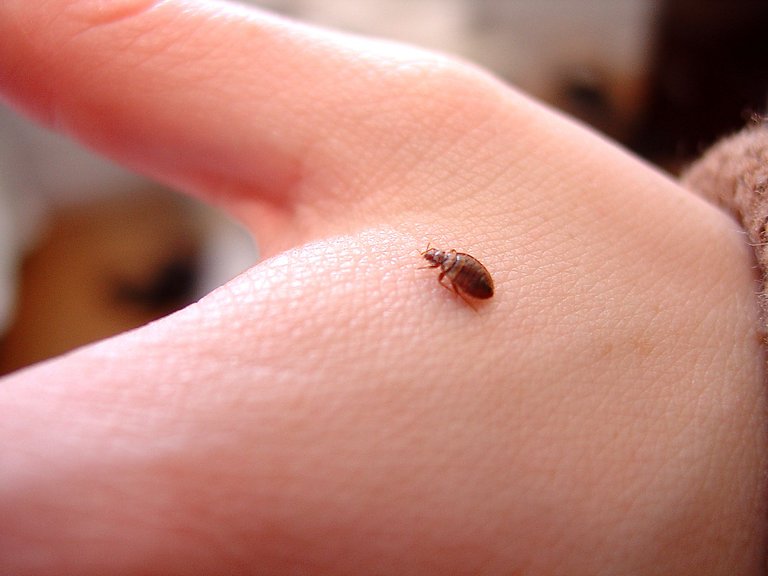Bites, blood spots on the bed sheets, black spots on the mattress... these are all signs of a bed bug infestation
Here's a guide to working out if you've got bed bugs, and how to treat the problem. The quicker you act, the easier treatment will be, so look out for these seven signs:
1. Bed bug bites
Bed bugs are nocturnal, and prefer to feed on a deeply sleeping host, which means you'll be bitten shortly before sunrise. The bites appear as itchy, red welts that can be flat on the skin or raised. The majority of bites will appear on the chest or back, neck, hands, feet or face. However, bed bugs can bite any area of exposed skin. The bites tend to appear in clusters as they crawl around testing areas multiples times to find the best sources of blood. so the bites can show up in groups, row or zig-zag lines. They may cause a rash or fluid-filled blisters, and bites can become infected with bacteria if scratched - signs of infection include pain, increasing redness and swelling.
2. Blood stains on bedding
When you move in your sleep and squash a bed bug that's just fed, it'll leave little blood smears on your sheets, duvet covers and pillowcases.
3. Bed bug poo stains
These look like black felt tip marks on fabric. Usually found on the edges of mattress, or on bedsheets. These stains are digested blood - the bed bugs' faecal matter. Wipe the stains with a wet rag - if they smear. its a positive for bed-bugs faeces.
4. Eggs and egg shells
Female be bugs can deposit one to five egg a day, and may lay 200 to 500 eggs in their lifetime. Under normal room temperature and with an adequate food supply, they can live for more than 300 days. Bed bug eggs are translucent to pearly white in colour and, when first laid, are coated in a shiny flim to help them stick to surfaces. They are shaped like rice grains and are very, very tiny - around 1mm - though visible to the naked eye. Empty shell look flattened.
5. Shed skin (or shells)
After hatching, the bed bug starts life as a nymph. As they mature, they'll shed their skin five times, once at each new stage of development. Look for the evidence in the usual bed bug hangout joints: box springs, mattresses, wooden furniture and so on.
6. What they look like
They're brown, oval and flat, ranging in size from 4.5 mm to as long as 7 or 8 mm when fed - approximately the size of an apple seed. They turn a reddish colour after feeding because they're then swollen with blood.
7. The musty smell
Bed bugs have glands that release pheromones when they're disturbed, to warn the rest of the group. The odour is musty and repellent. Bad news: if you can smell them, you've got a severe infestation on your hands.
How to treat it?
There are two steps to freeing yourself from the bed-bug onslaught:
1. Kill them in your bed
If they can't feed, they can't breed. So, strip your bed of all sheets, pillowcases, and other bedding, and seal these in plastic garbage bags to keep bed bugs from escaping and infesting other parts of your home. Take the bags straight to the washing machine, and wash them using the hot water setting. Then, dry the bedding on high heat if their tags allow it. This treatment will kill any bugs or eggs hiding in your bedding. Use a vacuum cleaner to remove any bed bugs, shells, feacal droppings, or eggs that might be along the seams of yours mattress, pillow, box spring, and along the crack and crevices in the bed frame, headboard, and footboard. follow up the vacuuming with a high-pressure steamer to kill bed bugs and eggs hidden deep within furniture. Spray down the joints of the bed frame, headboard, and footboard with a contact spray and residual spray.
2. Hunt and destroy
Clothes, book and other personal belongings shouldn't be left on the floor, as they make for hiding places for bed bugs. Seal these in garbage bags and store them in another room. Vacuum and steam along baseboards, window sill and edge of the carpet. Make sure you clean the vacuum and steam cleaners afterwards. A portable bed bug heater can be used to clean items that can't be washed or vacuumed, such as books, shoes or luggage. You can also use bed bug sprays and powders to kill the pests in hard-to-reach areas. Sprays will need to be reapplied every two weeks for a few months.
How do you get bed bugs?
Bed bugs can be transported easily in luggage, clothing and furniture. Once in your home they can quickly spread from room to room. They don't jump or fly, but can crawl long distances.
Prevention tips:
- Inspect your mattress and bed regularly for signs of an infestation, and act quickly if detected
- Carefully inspect second-hand furniture before bringing it into your home
- Bedbugs aren't attracted to dirt(so, they're not a sign of an unclean home), but clearing up any clutter will reduce the number of places they can hide.



Hi! I am a robot. I just upvoted you! I found similar content that readers might be interested in:
https://mumbaimirror.indiatimes.com/others/health-lifestyle/how-to-get-rid-of-bed-bugs/articleshow/60862881.cms
Congratulations! This post has been awarded a 100% upvote by @sweepstake! This post was selected from among all recent posts as the winner of lottery #8, which had no valid entrants. You can win again by entering in @sweepstake's regular lottery! To nominate a post for the regular lottery, just send 0.1 SBD or STEEM to @sweepstake, and include the url of the post you would like to nominate as a memo. Good luck!